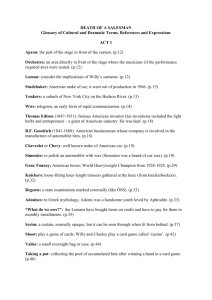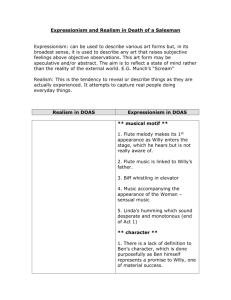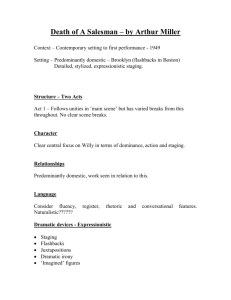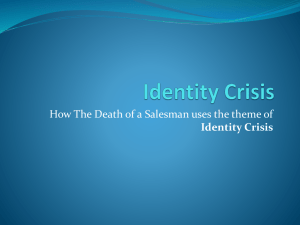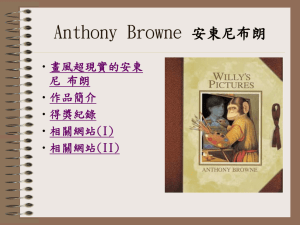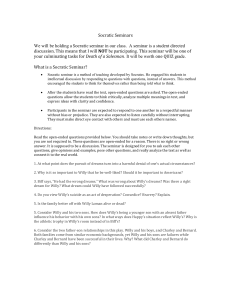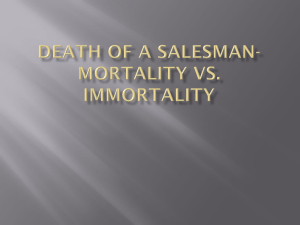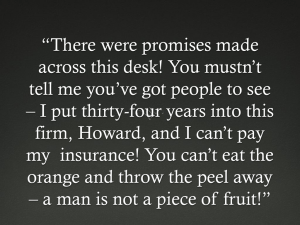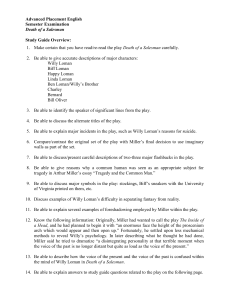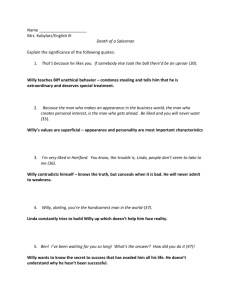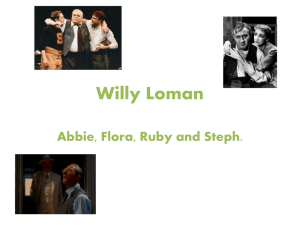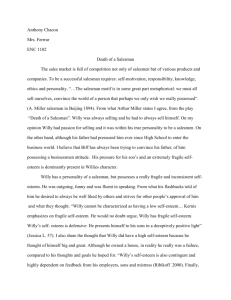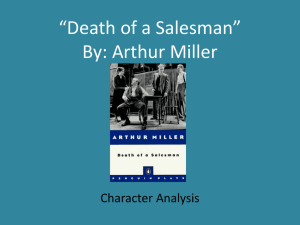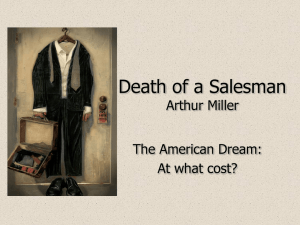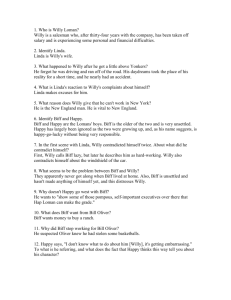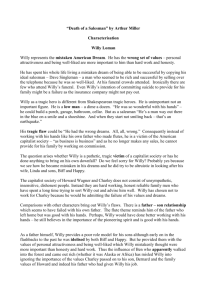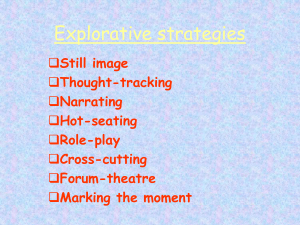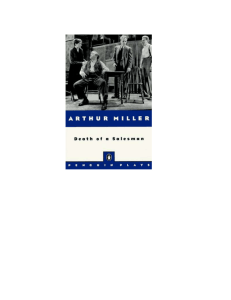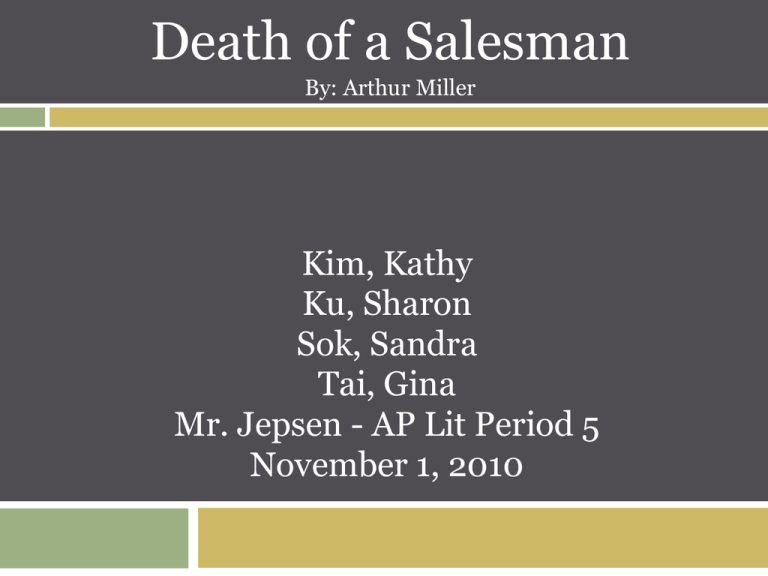
Death of a Salesman
By: Arthur Miller
Kim, Kathy
Ku, Sharon
Sok, Sandra
Tai, Gina
Mr. Jepsen - AP Lit Period 5
November 1, 2010
Act I – Linda
6th Edition – Page 1801-1803
This scene portrays how Linda is the
foundation for the Loman family.
While Biff and Happy become
“evasively” offensive about their father,
Linda remains steadfast to Willy, yet
motherly to her sons.
Act I – Linda
6th Edition – Page 1801-1803
i.e. Biff angrily asks “What the hell is
the matter with him?.... He’s got no
character.” Linda answers “Don’t go
near him!.... a lot of people think he’s
lost his balance but you don’t have to
be very smart to know what his
trouble is. The man is exhausted.”
Act II - Charley
6th Edition – Page 1822-1823
This scene
portrays Willy and
Charley’s
relationship.
Charley is
perceived as the
rational center of
the drama.
Act II - Charley
6th Edition – Page 1822-1823
He finances much of Willy’s monetary
needs.
While Willy gets emotional (i.e. “I
don’t want your goddam job!.... That
snotnose. Imagine that? I named
him.”), Charley remains reasonable.
Element: Setting
It occurs over a span of one day in the
late 1940s primarily in New York.
The Lomans reside in tenement-like
houses:
Symbol of the Lomans’ desire to break
free and escape debt.
Element: Setting (cont’d)
Willy’s wants freedom
Evident through his opinion of “the
way they boxed [him] in here. Bricks
and windows, windows and bricks.”
The 1940s reflect the American Dream
because World War II had just ended.
Element: Setting (cont’d)
America encouraged everyone to have
equal economic opportunities.
Example: Happy and Biff reveal the
American dream: they want to create
a new business to relieve their
dependency on Willy.
Element: Setting (cont’d)
Setting also involves music
Miller uses the music to transition
between scenes
“New
music is heard” – a high, rollicking
tune
“Music is heard, gay and bright” to
transition to Act II as Willy is drinking
coffee and the kitchen table.
Element: Figurative Language
Purpose: develop scheme and evoke
impressions
Example: Willy comes home from his
Florida business trip and says he is
“tired to the death.”
Our Interpretation: Establishes his
tiresome state of mind and
foreshadows his death
Element: Figurative Language
Willy says that he’ll “knock them
dead next week” at his business trip.
After Howard fires Willy, Willy tells
himself to “pull….together!”
Our Interpretations
“Knock them dead…”:He didn’t mean
he’ll kill his clients. Rather, he means
he hopes for success.
“Pull…together”: Willy doesn’t
literally mean to pull himself
together, but he means he will look
toward the next time as a chance to
do better.
Biographical Criticism
Purpose: The author’s biography
impacts what he writes into his
literary works.
Miller was born in New York City,
which is also where Death of a
Salesman takes place.
Miller’s father was a rich
businessman which is Charley’s job.
Biographical Criticism (cont’d)
Miller’s family was originally rich
until the Wall Street Stock Crash in
1929.
Miller was able to experience lives
of the upper class elite and lower
class.
This influenced the social statuses
of the Lomans and Charley’s family.
Biographical Criticism (cont’d)
Miller’s father-in-law and Willy are
insurance salesmen.
Miller and his wife raised two
children – Willy and Linda raises Biff
and Happy.
In high school, Miller was a football
player.
Young Biff is a football player.
Feminist Criticism
Purpose: to reveal women’s roles in
the society at the time of publication
Linda’s role in her marriage –
separate spheres
Willy tells Linda to “shut up” and
stop interrupting him repeatedly.
Willy earns money while Linda
stays home – housewife.
Fin
Thanks for listening!

